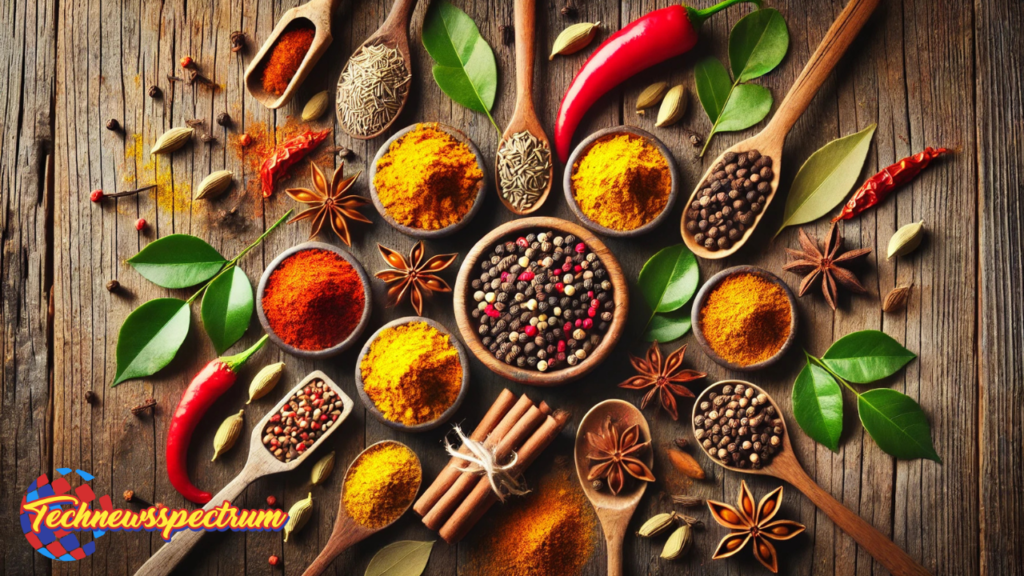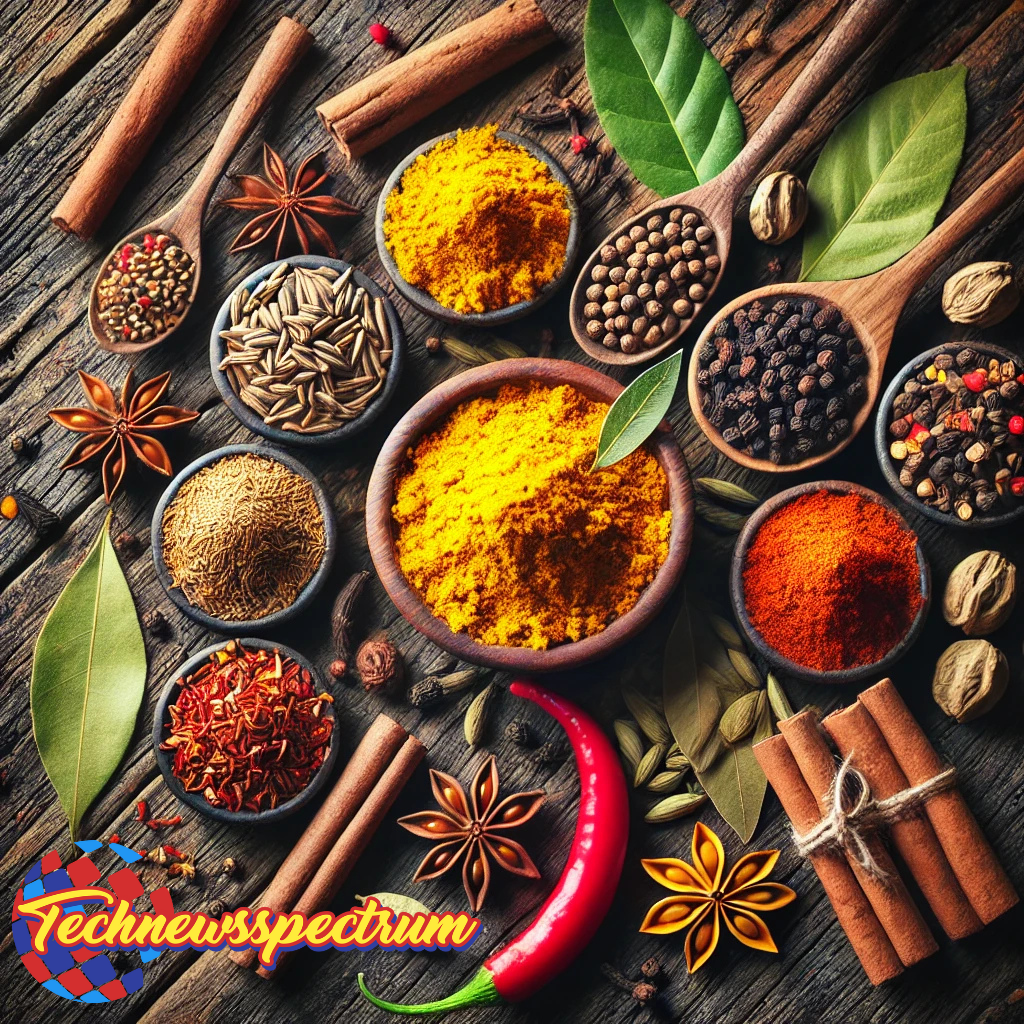Ultimate Guide to Spice of India History or Benefits and Uses
Table of Contents
- Introduction
- Historical Significance of Indian Spices
- Popular Spices of India and Their Unique Flavors
- Health Benefits of Indian Spices
- Indian Spice in Ayurvedic Medicine
- Impact of Indian Spice on Global Cuisine
- Culinary Uses of Indian Spices
- How to Store and Preserve Indian Spices
- Regional Variations of Indian Spices
- How Indian Spice Enhance Flavor Profiles
- Spices and Their Role in Religious Rituals
- Economic Impact of Indian Spice Trade
- Sustainability and Organic Farming of Indian Spices
- Frequently Asked Questions (FAQs)
- Conclusion
1. Introduction
Indian spices are heart of country’s culinary medicinal and cultural traditions. From ancient times to modern kitchens they have played an essential role in shaping global cuisine. This guide explores their historical importance health benefits culinary uses and much more.

2. Historical Significance of Indian Spices
Indian spice date back over 5000 years. Spice trade between India and ancient civilizations including Romans Egyptians and Chinese contributed to India’s reputation as “Land of Spices.” Spice routes significantly influenced global commerce and colonization.
3. Popular Spices of India and Their Unique Flavors
India boasts a variety of spices each with its distinct aroma and taste
- Turmeric Earthy and slightly bitter known for its medicinal properties.
- Cumin Warm and nutty flavor essential in Indian curries.
- Cardamom Sweet floral and aromatic used in desserts and teas.
- Coriander Mild citrusy notes a staple in Indian spice blends.
- Cloves Strong and pungent used in biryanis and garam masala.
- Black Pepper Adds heat and depth to Indian dishes.
4. Health Benefits of Indian Spices
Many Indian spice provide impressive health benefits including
- Turmeric Contains curcumin an anti inflammatory compound.
- Cinnamon Regulates blood sugar and improves digestion.
- Ginger Aids digestion and alleviates nausea.
- Fennel Seeds Improves metabolism and reduces bloating.
- Nutmeg Promotes relaxation and improves sleep quality.
5. Indian Spices in Ayurvedic Medicine
Ayurveda relies heavily on spices for their healing properties. Some key spices used in Ayurvedic medicine include
- Ashwagandha Reduces stress and boosts immunity.
- Fenugreek Helps with diabetes management.
- Holy Basil (Tulsi) Enhances respiratory health.
- Mustard Seeds Improves circulation and detoxifies body.
6. Impact of Indian Spices on Global Cuisine
Indian spice have influenced global cuisines from Thai curries to Middle Eastern blends. Popular spice mixes include
- Garam Masala A staple in Indian cooking used worldwide.
- Curry Powder A blend of various spices used in international dishes.
- Tandoori Masala Essential for Indian style grilled dishes.
7. Culinary Uses of Indian Spices
Spices are integral to Indian cooking whether in dry rubs marinades or curries. Popular dishes include
- Masala Chai A spiced tea blend.
- Biryani A fragrant rice dish with layers of spices.
- Dal Tadka A lentil dish infused with aromatic spices.
8. How to Store and Preserve Indian Spices
To maintain their potency
- Store spices in airtight containers.
- Keep them away from direct sunlight.
- Use whole spices instead of ground for longevity.
9. Regional Variations of Indian Spices
Each region of India has its spice specialties
- North India Rich warming spices like cloves and nutmeg.
- South India Coconut mustard seeds and curry leaves dominate.
- West India Sweet and tangy spices like kokum and saffron.
- East India Mustard based spice blends and panch phoron.
10. How Indian Spices Enhance Flavor Profiles
Indian spice are known for their ability to balance five basic tastes
- Sweet Cardamom cinnamon
- Salty Black salt rock salt
- Sour Tamarind dried mango powder
- Bitter Fenugreek turmeric
- Spicy Red chili black pepper
11. Spices and Their Role in Religious Rituals
Spices are used in Hindu Buddhist and Jain rituals. Turmeric is a sacred spice in Indian weddings and religious ceremonies.
12. Economic Impact of Indian Spice Trade
India is largest producer and exporter of spices contributing significantly to its economy. Spice industry supports millions of farmers.
13. Sustainability and Organic Farming of Indian Spices
Growing awareness of organic farming has led to increased sustainable spice production. Many farmers now use eco friendly techniques to maintain soil health.
14. Frequently Asked Questions (FAQs)
Q1 What is most used spice in Indian cooking? A Turmeric is one of most widely used spices in Indian cuisine.
Q2 Are Indian spices good for digestion? A Yes spices like cumin fennel and ginger aid digestion.
Q3 How can I make a simple Indian spice blend at home? A Mix turmeric cumin coriander and garam masala for a basic blend.
Q4 Are Indian spices safe for daily consumption? A Yes when used in moderation they offer health benefits.
Q5 What is best way to grind whole spices? A Use a mortar and pestle or an electric spice grinder for best results.
Q6 Do Indian spices lose potency over time? A Yes ground spices lose flavor faster than whole spices. Store properly to extend shelf life.
15. Conclusion
Indian spice are more than just flavor enhancers they hold historical cultural and medicinal significance. Whether you’re a home cook or a spice enthusiast incorporating these aromatic wonders into your diet can transform your culinary experience.


